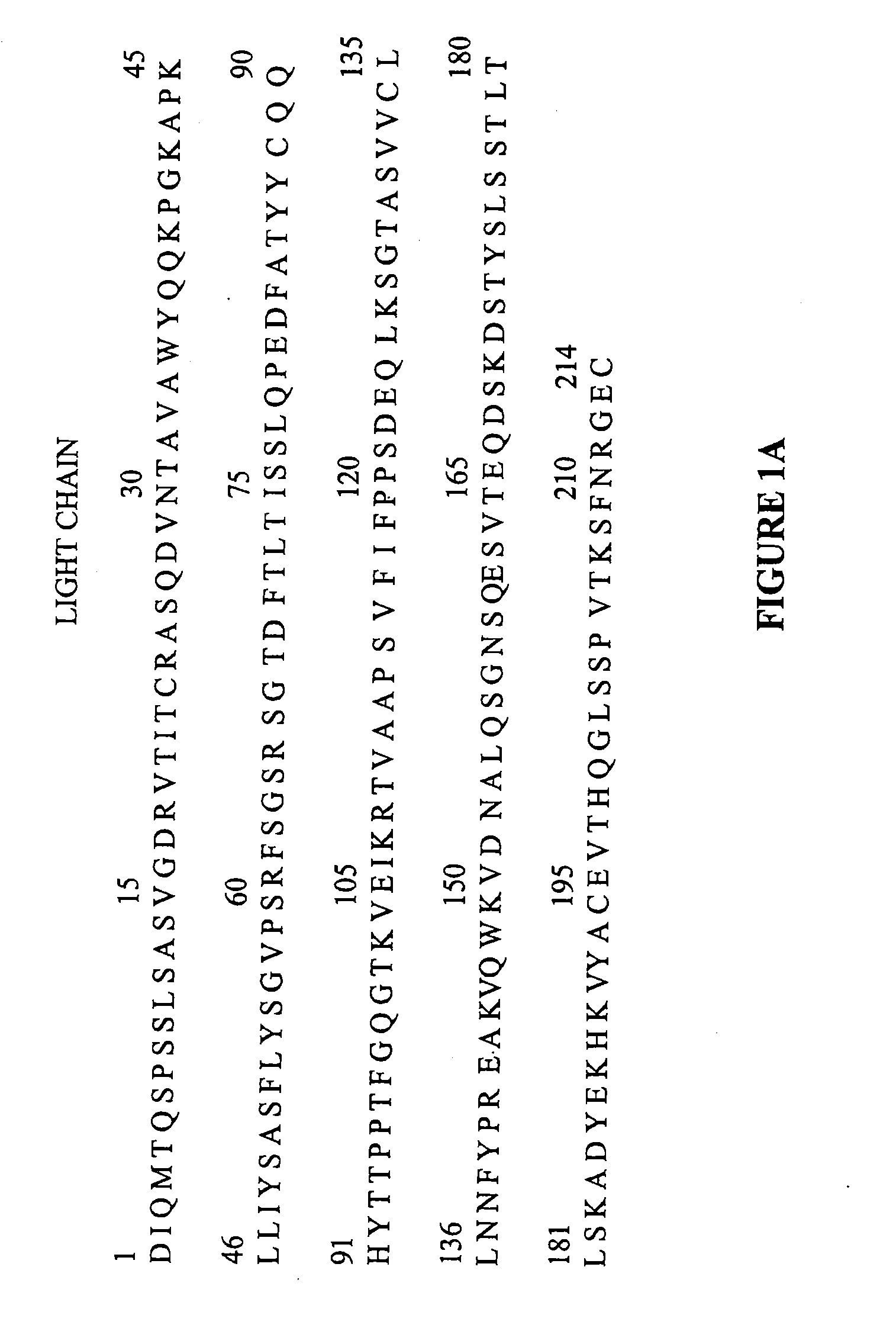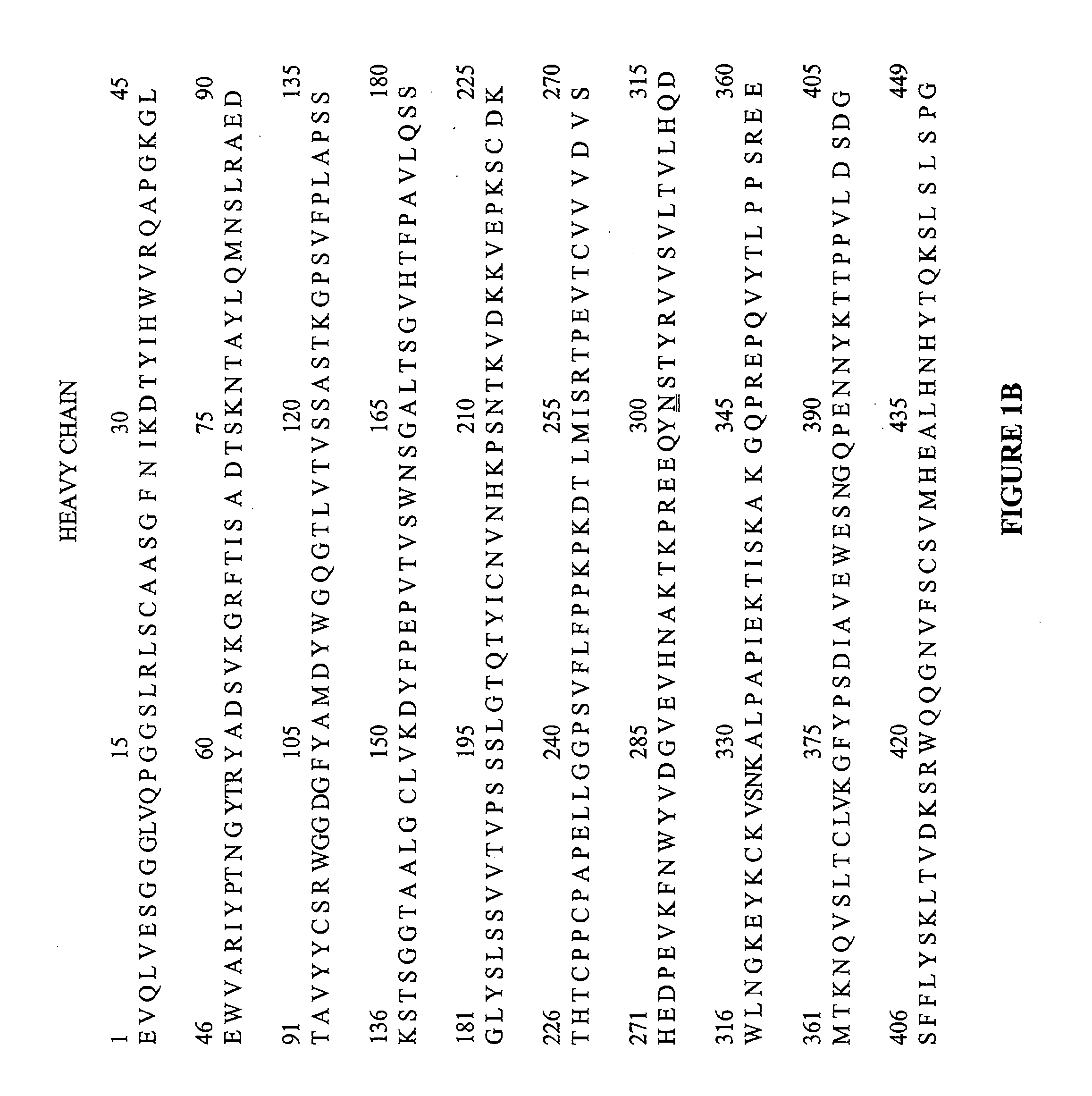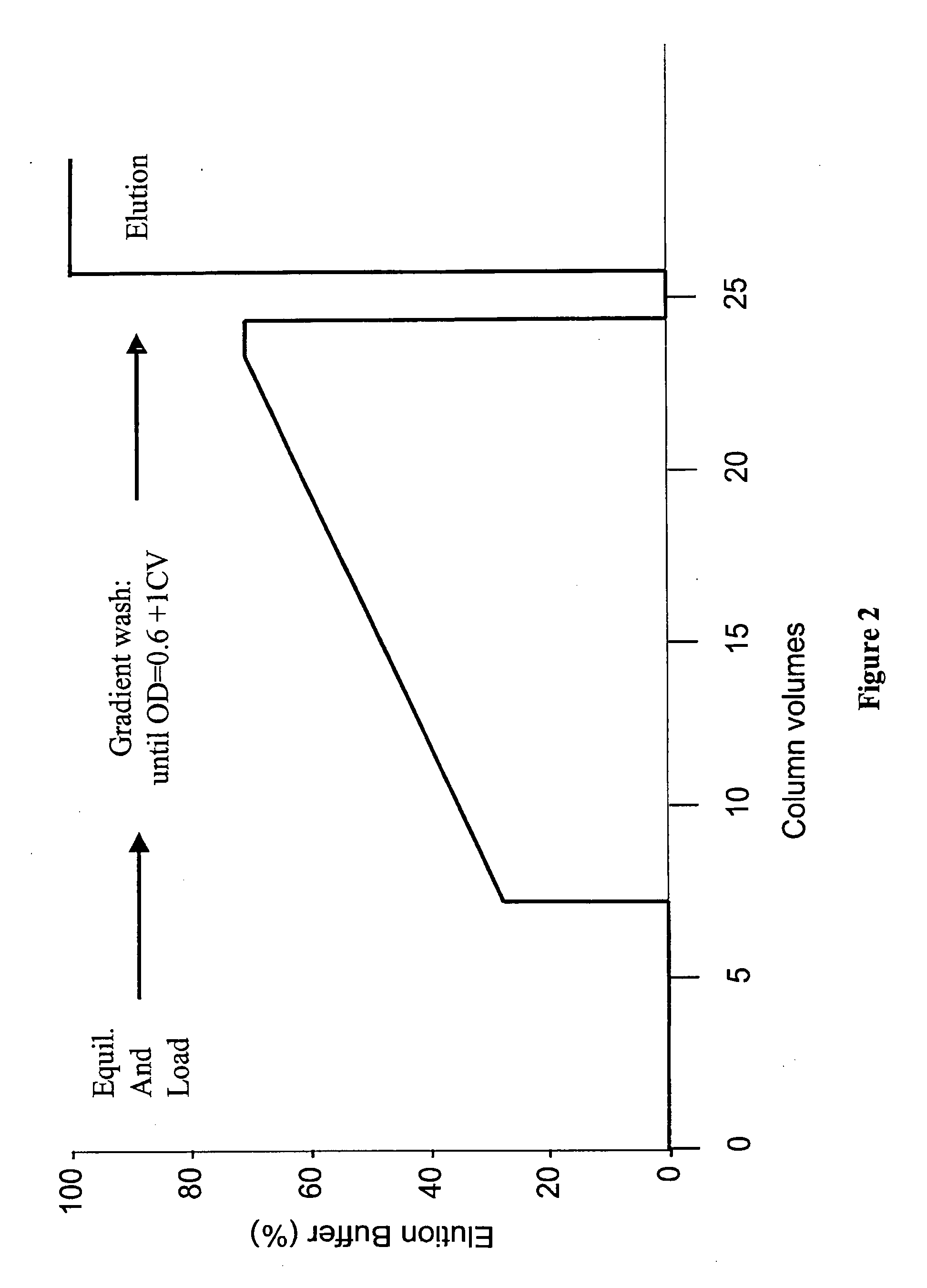Protein purification
a technology of protein purification and purification buffer, which is applied in the direction of peptides, cation exchanger materials, separation processes, etc., can solve the problems of difficult removal of subcellular fragments, difficult use as human therapeutics, and difficult economic purification of proteins, so as to increase the conductivity of the wash buffer.
- Summary
- Abstract
- Description
- Claims
- Application Information
AI Technical Summary
Benefits of technology
Problems solved by technology
Method used
Image
Examples
example 1
[0135]The SPXLFF column was prepared for load by sequential washes with regeneration buffer (0.5 N NaOH) followed by equilibration buffer (30 mM MES / 45 mM NaCl, pH 5.6). The column was then loaded with Protein A pool adjusted to a pH of 5.60±0.05 and a conductivity of 5.8±0.2 mmhos. The column was washed using a linear salt gradient, essentially as depicted in FIG. 2. Prior to beginning the linear gradient, elution buffer (30 mM MES, 100 mM NaCl, pH 5.6) was mixed with equilibration buffer to produce an initial wash buffer that comprised about 26% elution buffer. The slope of the linear gradient was varied in different experiments, with rates of increase of salt concentration of 1 mM NaCl / Column volume (CV), 2 mM / CV and 3 mM / CV used. The linear gradient continued until an OD of 0.6 at 280 nm was measured in the flow through. The column was then washed with 1 CV of the ultimate wash buffer.
[0136]rhuMAb HER2 was then eluted from the column with elution buffer (30 mM MES / 100 mM NaCl, p...
example 2
[0139]An SPXLFF column, as described above, was prepared for load by sequential washes with regeneration buffer (0.5 N NaOH) followed by equilibration buffer (30 mM MES / 70 mM Na / HOAc, pH 5.5). The column was then loaded with Protein A pool adjusted to a pH of 5.60±0.05 and a conductivity of 5.8±0.2 mmhos.
[0140]Following loading, the column was washed using a multi-slope salt gradient with three distinct segments, each having a progressively shallower slope, essentially as illustrated in FIG. 3. The gradient parameters are shown in Table 3 below.
[0141]The wash began with an initial stepwise increase in the salt concentration of the equilibration buffer to form the initial wash buffer. The initial wash buffer was created by mixing elution buffer (30 mM MES, 145 mM Na / HOAc, pH 5.5) with equilibration buffer to produce a buffer that comprised 26% elution buffer. During the first linear gradient segment the column was washed with approximately 4.9 column volumes of wash buffer, during wh...
PUM
| Property | Measurement | Unit |
|---|---|---|
| OD | aaaaa | aaaaa |
| conductivity | aaaaa | aaaaa |
| conductivity | aaaaa | aaaaa |
Abstract
Description
Claims
Application Information
 Login to View More
Login to View More - R&D
- Intellectual Property
- Life Sciences
- Materials
- Tech Scout
- Unparalleled Data Quality
- Higher Quality Content
- 60% Fewer Hallucinations
Browse by: Latest US Patents, China's latest patents, Technical Efficacy Thesaurus, Application Domain, Technology Topic, Popular Technical Reports.
© 2025 PatSnap. All rights reserved.Legal|Privacy policy|Modern Slavery Act Transparency Statement|Sitemap|About US| Contact US: help@patsnap.com



